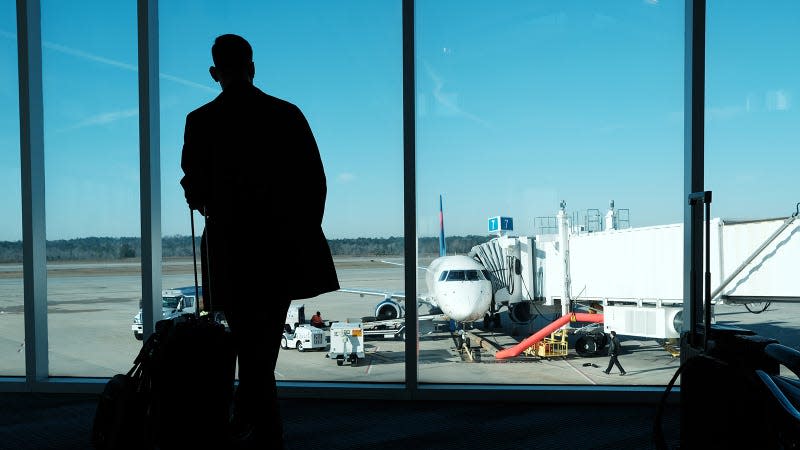Even Holiday Flight Demand Can't Save Regional Airports

Another holiday season in the post-pandemic world, another surge in traffic mixed with record air fares and cuts in service. And while all airports are dealing with those problems differently, smaller airports are the ones particularly getting hit the hardest.
The total number of flights at 59 regional airports is half of what it was before the pandemic, according to data from the Regional Airline Association by way of NBC News. Meanwhile, 112 airports have seen a reduction in service by at least a third. New York’s Ithaca Tompkins International Airport is a microcosm of what’s happening at these smaller facilities around the country:
Read more
Ithaca Tompkins International Airport in New York, for example, lost its twice-daily American Airlines flight to Philadelphia on Sept. 6. On the remaining United Airlines route to Newark, New Jersey, and the Delta Air Lines route to Detroit, Hopper found the fares for Thanksgiving and Christmas at Tompkins to be around double the national average for domestic round-trip flights. Round-trip Thanksgiving airfare from Ithaca to U.S. destinations is averaging $552, 39% higher than at the same time in 2019, according to Hopper. And Christmas flights from the city cost 10% more than 2019, at $605.
Blame the ongoing pilot shortage, propelled by airlines’ panic to downsize during the early days of the pandemic with zero foresight toward long-term business. That’s left fewer flights than ever in recent memory, and those that remain to command all-time high prices. Last month, average air fare was 43 percent higher than what it had been during the same period in 2021.
That’s despite the fact that demand for holiday travel remains pretty robust. In its latest annual holiday travel survey, Deloitte found that “domestic flight intent is up slightly.” However, the overall number of Americans expecting to travel at all is decidedly worse, at 31 percent versus 42 percent last year — and financial insecurity has been tipped as the top concern across every age demographic.
Hub airports have the volume to weather the storm. But the local sector is seeing the steepest declines in traffic. 25 large airports have lost about 16 percent of traffic, per the RAA via Travel Weekly, comparing October 2022 to October 2019. That doesn’t sound great, but it gets worse as you move down the list:
According to the RAA, 51 small-hub airports, defined as those that receive between 0.05% and 0.25% of U.S. passengers, have had a 19% reduction in traffic.
Among airports that receive from 10,000 departing passengers annually to 0.05% of U.S. passengers, 171 have lost flights. The average decline at those airports is 35%.
Among the smallest commercial airports, which receive between 2,500 and 10,000 passengers per year, 54 have lost flights. The average decline at those airports is 44%.
Fourteen airports, the RAA notes, have lost all commercial air service since October 2019.
For what its worth, Travel Weekly adds that 50-seat planes were already beginning to lose favor with the biggest U.S. airlines even before COVID-19. The consensus on these most compact of commercial aircraft is pretty poor, because they’re cramped and don’t provide first-class seating. Earlier this year I flew from my local airport — shoutout ABE! — to Washington Dulles on a CRJ-200. It was quick, easy and, frankly, as someone who has never and probably will never have the opportunity to fly first class, I’d rather just be able to fly at all. Wouldn’t you know, United eliminated that route shortly after my trip.
More from Jalopnik
Sign up for Jalopnik's Newsletter. For the latest news, Facebook, Twitter and Instagram.

